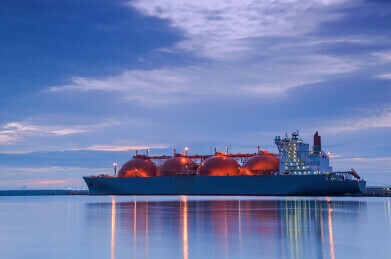Gas Detection
Maritime emission monitoring technology ensures precise greenhouse gas level measurement in the Far East and Oceania
Mar 19 2024
According to contemporary studies, the maritime industries are responsible for generating approximately 3% of the world’s greenhouse gas (GHG) emissions, with shipping being the primary contributor to a level of air pollution that exceeds the levels emitted by the aviation sector.
In 2018, the International Maritime Organization (IMO) adopted the Initial Strategy for the reduction of greenhouse gas (GHG) emissions from shipping. One of the main goals of the strategy was a reduction of international shipping’s 2008 levels of GHG emissions by at least 50% by 2050, to work towards a complete phasing out of GHG emissions from the maritime industry within this century. In 2021, the IMO also initiated short-term measures towards reducing the shipping sector’s carbon intensity by the target of 40% by 2030.
Dependable and precise air monitoring technology is critical to improving the maritime sector’s environmental track record and achieving the targets set by the IMO and other regulatory bodies. Accurate air monitoring will enable organisations to implement improved environmental policies, such as the use of cleaner or sustainable fuels, optimising shipping routes, and as a result: make the overall industry more energy efficient. Precise air monitoring data also provides a clear picture of the effects of shipping on the environment, thereby helping regulatory bodies pass legislation, based on well-informed decisions, to reduce emission levels. It is also critical for maritime and shipping companies to have access to reliable and precise air monitoring data to ensure that they comply with legislation and reach their emission reduction targets.
There is a variety of methods used for monitoring air emissions from shipping and maritime facilities. Direct sampling involves collecting samples from the ship’s exhaust gases and analysing them for various, prevalent contaminants including sulphur oxide, nitrogen oxides, and particulate matter. Another option is ‘remote sensing’ whereby sensors, either deployed onshore or in specially adapted aircraft, are used to measure emissions from passing ships, either onshore or from a specially equipped aircraft. Satellites are also used to measure air emissions from shipping over larger areas, providing an extensive overview of pollution levels, even on a global basis.
CAC GAS distributes the ISO 17025 Marine Emissions test kit throughout Asia and Oceania. The kit includes all the equipment needed to calibrate a Continuous Emission Monitoring System (CEMS) for testing to meet the limits stipulated in MARPOL Annex VI, which was introduced to reduce the main air pollutants contained in ships’ exhaust gas, such as sulphur oxides (SOx) and nitrous oxides (NOx), and prohibits deliberate emissions of ozone-depleting substances. The kit features a highly robust, temperature-resistant (-40 ° C to +80°C) mobile carrying case, which is lockable and includes wheels and a telescopic handle for easy transportation. The kit consists of two 3L (600 litres of gas @ 200 bar) high-pressure cylinders of chosen gas, a compact, single-stage cylinder pressure regulator and tubing.
CAC Gas’ product portfolio includes an extensive range of certified reference materials (CRMs), comprising specialty gas mixtures, liquids, and liquefied gas standards. They have collaborated with many of the world’s leading specialist analytical providers to ensure that the highest standards are met to cater to the highly demanding industries in which their products are used. CAC GAS’ specialised gases and liquids are available in a wide variety of different ampoules, bottles and cylinders.
Digital Edition
AET 28.2 April/May 2024
May 2024
Business News - Teledyne Marine expands with the acquisition of Valeport - Signal partners with gas analysis experts in Korea Air Monitoring - Continuous Fine Particulate Emission Monitor...
View all digital editions
Events
Jul 30 2024 Jakarta, Indonesia
China Energy Summit & Exhibition
Jul 31 2024 Beijing, China
2024 Beijing International Coal & Mining Exhibition
Aug 07 2024 Beijing, China
IWA World Water Congress & Exhibition
Aug 11 2024 Toronto, Canada
Aug 25 2024 Stockholm, Sweden and online









.jpg)








